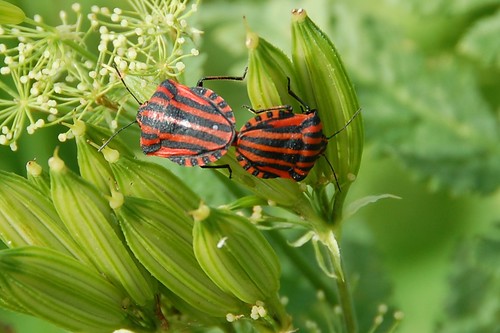Eryngium foetidum is a herb that smells like coriander and originated in the Caribbean and you can read all about it here. I found seeds at Chiltern's and now I've been reminded of it I'd quite like to give it another go, if I manage to keep it in mind long enough.

The Pyramidal orchid is nearly over now and is forming fat seed pods. Sources I have read suggest that they are butterfly pollinated but I've never seen a butterfly go anywhere near it. Small beetles seem to find the flowers endlessly fascinating though. I'd love to be able to spread the seed around the farm but like most terrestrial orchids it needs a symbiotic fungus around the roots so the best thing I can do is scrape some patches of the verge free of grass around the mother plant and hope that some of the seeds will germinate close to her.

Today is less hot and more overcast than the last week with some light rain, perfect for sowing some more seeds. Today I planted three rows of radish, some very old carrot seed and some beetroots in a tiny patch that I intend to keep hand watered for the duration. My crops often suffer from insufficient irrigation despite various measures, like bean trenches, which are supposed to help in drought conditions but the area is too big to keep everything moist with expensive tap water even if I had the energy to haul the water to where it's needed. A couple of small beds will have to suffice.

I've found a colony of Small Tortoiseshell butterfly caterpillars on some nettles in the vegetable beds. They seem to be thriving but the patch is small and if I had my way would be smaller still (it is in the veggies after all), so they will be mostly relocated this afternoon to more spacious surroundings. I hope they enjoy the trip.























